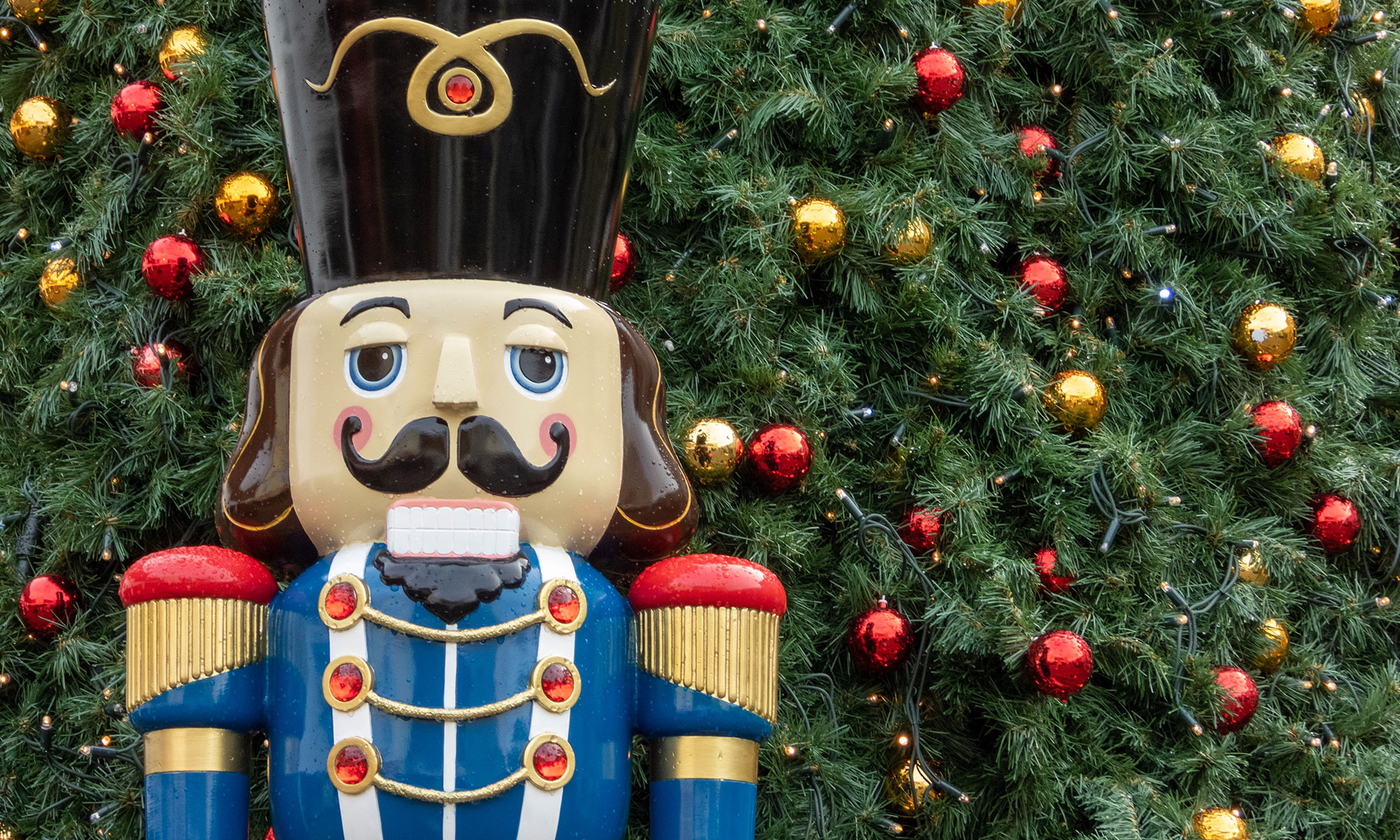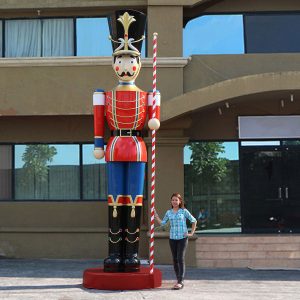The first clue that the Christmas season is upon us and about to get into full swing is the appearance of large, outdoor holiday decorations on lawns and roofs, and in front of homes, places of worship, and business establishments. These include Christmas trees and wreaths, live-size manger scenes, huge candy canes, and assorted oversized Santa Clauses, merry elves, and reindeer bedecked in jingle bells. Among these, one is also likely to see at least a few giant toy soldiers, standing either proudly alone at attention or in festive regiments. The question is….
Why Toy Soldiers?
Sure, toy soldiers of any size or for any occasion have been a perennial favorite of kids going back thousands of years. Yet a giant soldier standing cheek-by-jowl with a Nativity crèche celebrating the Prince of Peace seems to be the epitome of incompatibility. From whence came this tradition of observing the advent of the world’s gentle Redeemer with a figure symbolic of war? It looks so out of place, right?
More than likely, the artistry of it derives from the popular Nutcracker character from Tchaikovsky’s eponymous holiday suite, which has been associated with Christmas ever since it was first performed in December 1892. And yet, the tradition of publicly displaying life-size (or more-than-life-size) martial figures in non-military contexts is one that dates back many centuries.
Even a cursory survey will reveal countless fascinating examples of giant statues of soldiers or warlike figures standing guard within the community as a part of various cultures around the world. Some are now long gone, while others still exist today. Here are a few of the most notable ones.
Historical Examples of Giant Soldiers
(and Not Necessarily Toys)
♦ The Terracotta Army
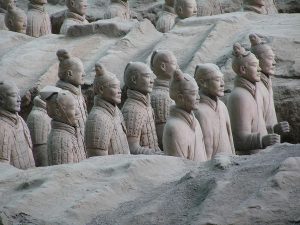
partial view of excavated figures (Source)
In a rural Chinese necropolis there stands a vast terracotta army, some 8,000 soldiers strong, commissioned by China’s first emperor, Qin Shi Huang (259–210 BCE). These life-size military figures—accompanied by an estimated 130 chariots and 670 horses, along with civilian figures such as government officials, acrobats, strongmen, and musicians—were fabricated over a period of 38 years for the purpose of being placed in the emperor’s mausoleum at the time of his death. Clearly, this army was meant to exhibit the power of the emperor. It was also meant to support and protect him and to extend his power beyond the land of the living and into the land of the dead.
♦ The Colossus of Rhodes
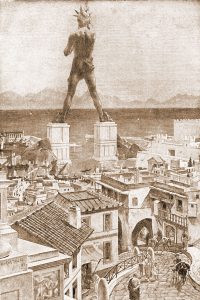
Forged of iron and bronze and completed in 280 BCE, this immense statue was once considered one of the Seven Wonders of the Ancient World. Although no trace of it remains, the eyewitness descriptions provided by the historian Strabo, the philosopher Pliny the Elder, and other well-traveled figures of antiquity confirm that it was, indeed, a marvel to behold. Standing at a height of 108 feet (approximately as tall as the Statue of Liberty), the Colossus was said to straddle the entrance to the harbor of the Greek island city of Rhodes. Built to celebrate a great military victory, and depicting the sun god Helios with his staff, torch, and flaming crown, the imposing figure was intended to remind all who approached the city that the people within its precincts were under the god’s protection.
♦ Ban Josip Jelačić Monument
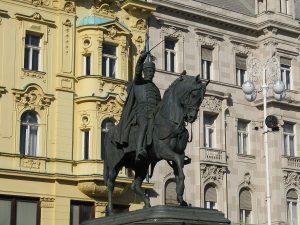
(Copyright © 2019 by Frank Weaver)
Situated in one of the main squares in Croatia’s capital, Zagreb, the dominating equestrian statue honoring Ban Josip Jelačić dates back to 1866. The Yugoslav communists removed the statue in 1947, but it was reinstalled in 1990. A national hero, Ban Josip is best remembered for having abolished the institution of serfdom in Croatia. Today, mounted on his prancing steed and with sword raised in defiance, the general appears ready to protect the Croatian people once again from all enemies.
♦ Monument of Grant
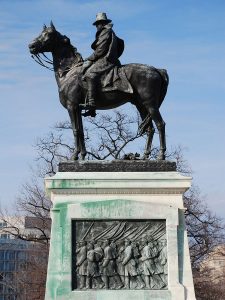
Throughout the United States can be found countless statues honoring the soldiers who served in all its various wars. They aren’t just monuments to the brave or the fallen. Much like the giant toy soldiers of Christmas, they seem to suggest a talismanic power as protectors of the homeland and household. And that goes double for the statue honoring General Ulysses S. Grant in Washington, D.C., whose military prowess in the American Civil War is widely credited with preserving our constitutional republic.
In summary, as these above examples imply, it should come as no surprise that giant toy soldiers—stoic and poised, calm and attentive—might be found right next to a Christmas Nativity scene, and not look out of place. They stand respectfully, and perhaps in awe, as Mary and Joseph tend their precious infant Jesus, who sleeps peacefully in his manger with the strains of the Nutcracker Suite playing in the background. With the example of centuries-long tradition of other statues from antiquity serving as protectors and guardians, giant toy soldiers at Christmastime should not be seen as symbols of war but rather as joyful yet determined protectors guarding the innocence and sweetness of family at this most peaceful time of the year.


